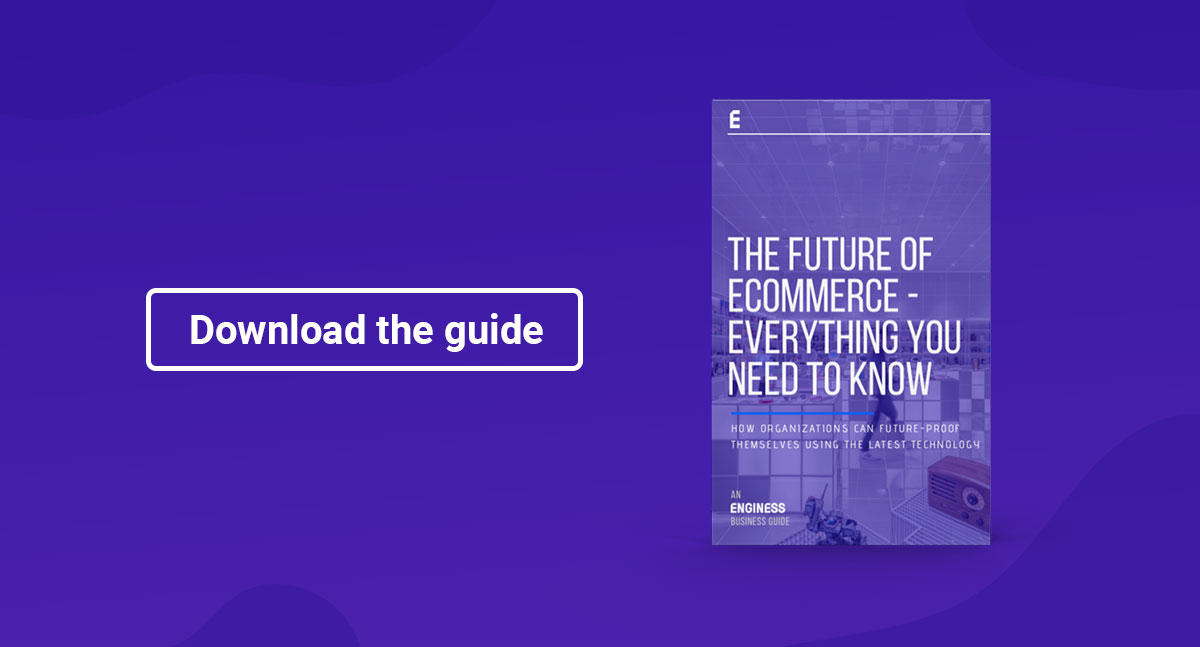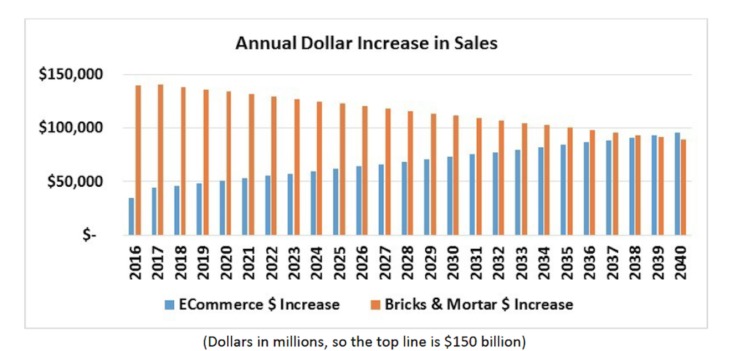Today, we’re going to dive into what we think is the next big thing: experience-driven eCommerce. We’re going to look at what it is, why you should care, and a few things you can do to get started.
What is Experience-Driven Commerce?
Experience-driven commerce isn’t an entirely new idea. Part omnichannel marketing, part digital transformation, part marketing automation, and part back-end integration, it’s really just the next level of commerce for B2C brands.
To understand and it means though, it’s best to look at where we came from.
First, we had brick and mortar stores. Great. Then we had franchises, who sought to create a single experience across multiple locations (think fast food chains).
Then, we eventually got eCommerce. Now, brands had essentially two stores and two brands: one for offline, and one for online (you can see this in the split in marketing teams between traditional marketers and new-fangled “digital marketers” in the 90s / 2000s).
Then came omnichannel, as brands realized that the same people shopping in-store were also shopping online, and we're looking for a unified, personalized brand experience.
And finally, we get to experience-driven commerce, where that omnichannel experience is accelerated even further. With the proliferation of channels, it became clear that the best way for brands to win is to provide relevant experiences, to the right person, in the right place, at the right time.
That’s the kernel of experience-driven commerce: using personalization, savvy technology, and automation to bring your brand to your customers at exactly the right moment, with exactly the right message for that moment.
This combination of the moment, the message, and the channel creates the experience, and the goal of experience-driven commerce is to create experiences that help brands win.

Why care about experience-driven commerce?
Because your margins are thin and brands who do care are brands who will win. It’s that simple.
Take, for instance, a recent Episever study that found that 92% of shoppers abandoned their online purchases. They put the products in the cart and then wandered out of the store. When was the last time you were at the grocery store and found a cart, piled high with produce and peanut butter, with the cart owner walking out, saying “You know, I guess not.”
Never. You have never seen that.
And yet we accept that as a reality in eCommerce.
At the same time, you don’t have to look far to see the growing importance of eCommerce.
Here’s one such startling graph from BigCommerce:

You don’t have to be a mathematician to work out that if consumers are spending more of their income online, they’re probably spending less of it in-store.
The final piece to this is that eCommerce marketplaces are increasingly dominated by a few, huge companies, the most significant of these being Amazon. And that presents a new challenge for brands:
- There’s huge competition for web traffic by behemoths who can pay for it.
- It’s unlikely that individual brands can complete at a purely transactional experience level (e.g. Amazon is the better than anyone at processing payments and getting goods out the door).
- Amazon can enter a product category at any time and dominate it, either through their aforementioned transactional experience or through price domination (via enormous economies of scale).
In short, brands are being squeezed offline to go online, and dominated online in a head to head comparison of their product and transactional capabilities.
That leaves only one competitive advantage: experience-driven commerce. Only a brand can understand its audience, its product, and its marketplace well enough to deliver an experience, across every channel, in real-time. This means doing all the standard advertising and marketing activities, but also:
- Marketing through Instagram and leveraging influencers
- Creating unique experiences that drive traffic to stores
- Geo-located store messages to drive street traffic in
- Sensor-based, time-sensitive promotions that deliver personalized incentives to drive purchases via a smartphone app.
How to Keep Up
If that example above scared you, don’t worry. Three years ago, it scared Foot Locker too. Now, however, they’re top of their game when it comes to experience-driven commerce.
They embarked on a digital transformation project, uniting teams, breaking technological and organizational silos, shifting to agile methodologies, and building key brand partnerships for their target audience. This culminated in an augmented reality scavenger hunt around LA, where digital clues led users to popup stores. Complete the hunt, and you get the chance to pre-buy an extremely exclusive pair of sneakers.
This sort of campaign — from the partnership with Nike to the AR, geo-located clues, to the physical popup stores — was only possible because of Foot Locker’s mission of experience-driven commerce.
Over to You
Not everyone is Foot Locker (yet!)
So what can you do today? Here are 3 things to get the experience ball rolling.
- Build an experience council. You’re going to need buy-in from multiple stakeholders, and the best way to get it is to get the leaders of every department on an experienced council. Meet once a month to discuss where you are, where you want to be, and how you’re going to get there. We recommend including IT, marketing, customer experience / UX, product, stores / retail teams, and inventory.
- Move incrementally. Rome wasn’t built in a day, and AR-driven campaigns with geo-targeted tie-ins didn’t happen overnight. Work gradually to both show the value of experience-driven commerce, and also, so you don’t lose momentum and your mind. Focus on incremental changes to deliver meaningful results over the long term.
- Hire an expert. The biggest problem we see again and again is knowing where to start. Get someone in who’s been there before and they can not only help shape your map but also help you prioritize where you need to go.
Still got questions? Check out our ebook on the future of e-commerce. Are you future proof? Find out!
